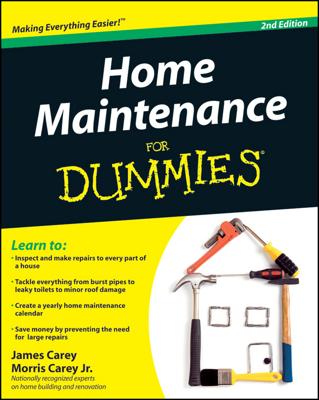A smoke alarm is an inexpensive way to protect your family from smoke and fire injuries, but you must take the time to test it to ensure that it's working properly. A properly functioning smoke detector doubles your chance of surviving a fire by warning you of a dangerous situation before it's too late.
For minimum coverage, have at least one smoke detector or alarm on every level of your home and in every sleeping area. You can also add alarms to hallways outside every bedroom, the top and bottom of all stairways, and often-forgotten places such as basements, attics, utility rooms, and garages.
There are two kinds of smoke detectors:
Battery-operated: These inexpensive units can easily be installed anywhere. They require frequent inspection to determine the condition of the battery.
AC-powered: Installed by an electrician (or those with a good working knowledge of electricity), these units are much more dependable over the long haul due to their direct-wired power source. But they should have an independent battery backup so that they continue to operate during a blackout or an electrical fire that temporarily interrupts power.
Some newer models have a hush-button feature that silences a nuisance false alarm and desensitizes the unit for a few minutes until the air clears, when it resets itself. Other high-end models have safety lights that come on when the alarm is activated.
All smoke detectors and alarms have a test button that, when pushed, causes the alarm to sound. Also, most detectors have either a blinking or a solid light that glows to let you know that the alarm is getting power.
Once a month, get up on a chair or use a broom handle for extra reach and push the test button. If you don't hear anything, then your battery is dead. If after changing the battery, the smoke detector is still not working, immediately replace it with a new one.
While battery-operated units have a built-in device that chirps when batteries get low, signaling the need for replacement, common wisdom dictates not waiting until that point. Batteries should be replaced twice a year, once in the spring and once in the fall.
Never remove a battery from your smoke alarm for use in another item, such as a radio, toy, or TV remote. Many people do so with every intention of replacing them in short order, only to remember that they forgot while standing and watching their house burn down (if they were lucky enough to escape).
While you're up checking your battery every month, also brush or vacuum the alarm to keep dirt and dust out of the mechanism. Never use cleaning sprays or solvents that can enter the unit and contaminate sensors.
The button test ensures that the batteries are working. However, it doesn't tell you whether the detector is operating properly. To find out, put two or three lighted matches together (the wood kitchen type is best) and then blow out the flame, holding the matches so that the smoke wafts up toward the unit.
After a period of ten years, a smoke detector has endured more than 87,000 hours of continuous operation, during which time the internal sensors have probably become contaminated with dust, dirt, and air pollutant residues. If your alarm or detector is more than ten years old, consider replacing it to maintain optimal detection capabilities of deadly smoke in your home.

